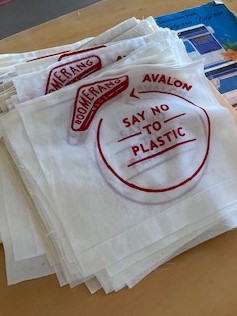World Oceans Day On June 8th 2021: Local Solutions To Keep The Life & Livelihoods In Our Local Sea
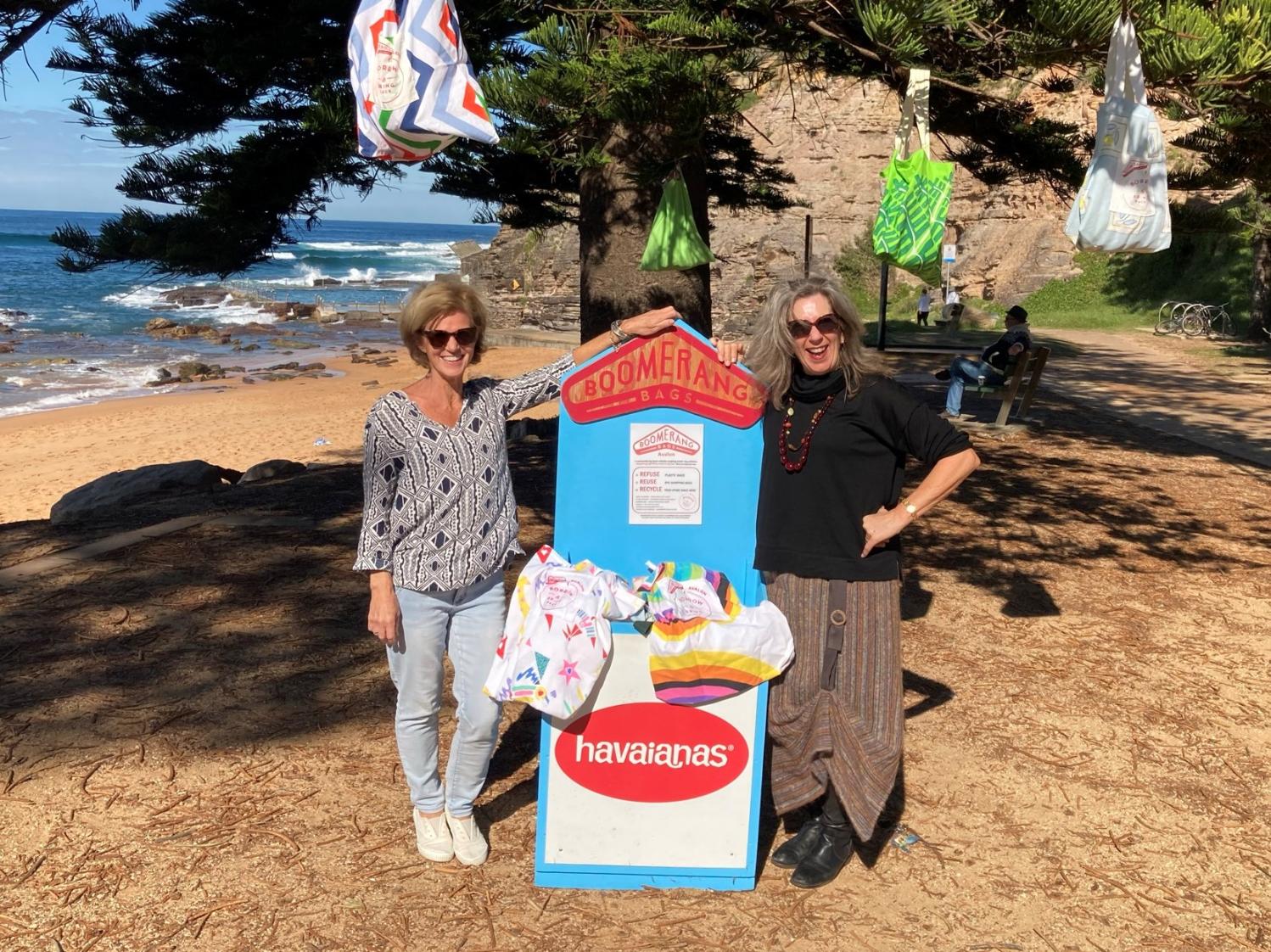
The 2021 United Nations World Oceans Day, on Tuesday June 8th 2021, will highlight the theme The Ocean: Life and Livelihoods.
Secretary-General António Guterres' message for 2021 is
This year’s observance of World Oceans Day falls as the world wrestles with the COVID-19 pandemic, a climate crisis and humankind’s continuing assault on oceans, seas and marine resources.
The recently issued Second World Ocean Assessment confirmed that many of the benefits that the global ocean provides to humankind are being undermined by our own actions.
Our seas are choking with plastic waste, which can be found from the remotest atolls to the deepest ocean trenches.
Overfishing is causing an annual loss of almost $90 billion in net benefits – which also heightens the vulnerability of women, who are vital to the survival of small-scale fishing businesses.
Carbon emissions are driving ocean warming and acidification, destroying biodiversity and causing sea level rise that threatens heavily inhabited coastlines.
The theme of this year’s observance, “The Ocean: Life and Livelihoods”, underscores the importance of oceans for the cultural life and economic survival of communities around the world.
More than three billion people rely on the ocean for their livelihoods, the vast majority in developing countries.
As we strive to recover from COVID-19, let’s end our war on nature.
This will be critical to achieving the Sustainable Development Goals, keeping within reach the 1.5-degree target of the Paris Agreement, and ensuring the health of our oceans for today’s and future generations.
World Oceans Day commences the start of World Oceans Week, and that is followed by World Sea Turtle Day, observed on June 16th, 2021, chosen as it was the birthdate of Florida born “father of sea turtle biology” Dr. Archie Carr.
In our area every day is Oceans Day, Oceans Week and Sea Turtle Day (as well as World Penguin Day, even if that's April 25th) - although all our marine dwelling animals, the resident surfing industry and surfers, sailors, surf clubs, marinas, Avalon Boomerang bags, as well as volunteer organisations such as Surfrider, the Northern Beaches Clean Up Crew, Save Manly Dam Catchment Committee, Living Ocean and even tour operators are encompassed under the theme of this year's World Oceans Day.
Ours is an aquatics focussed community centred around Life in the Ocean, as these few examples show:
Although June 1st is the official start to the whale migration season whales have been spotted from April on during their annual north. Around 60 thousand whales will migrate north, some to Queensland, others to Western Australian coastal regions and as far north as Broome.
At the end of this month, Sunday June 27th, the annual ORRCA Whale Census will happen, although the ORRCA team have already been busy this week with entangled whales. Jools Farrell will be up at the south Bilgola-Avalon headland again this year, all day, and will welcome those who can drop by and help out for a while. Take a hot coffee for her with you if you can, it can get pretty cold up there this time of year.
Jools involvement with ORRCA goes back years and this is a 24/7 year round volunteer organisation.
On Tuesday June 1st 2021 the ORRCA Research Team observed and confirmed an entangled Humpback whale off Miners Beach at Port Macquarie. This was a young whale, around 7-8m, trailing 200m of rope to which was attached 3 white buoys and 1 orange buoy.
On Wednesday June 2nd 2021 the ORRCA Research Team have observed and confirmed another entangled Humpback whale off Port Macquarie. This time it was 3 whales out about 2km off shore, with the smallest whale having a rope around its dorsal fin with a white buoy a few metres behind it. The young whale from the day before had been spotted further north at Coffs Harbour, still entangled, with rescue teams considering options as to what they could do.
Fortunately, late on Friday the Sea World rescue crew intercepted the young whale off Evans Head and removed most of the ropes and gear. These whales had been preceded by sightings on Sunday May 16th of an entangled whale off Sydney which, in this instance, freed itself.
Then - later the day this week's Issue comes out - yet another:
WE NEED YOUR HELP – ENTANGLED HUMPBACK ALERT
Sunday 06th JUNE 2021: This afternoon, the ORRCA Rescue Hotline Team received notice of another confirmed sighting of an entangled Humpback whale off Coogee!
Latest details:- Humpback whale heading north
Sighting: firstly off Coogee and last sighted of North Bondi at last light, NSW
Observation: the whale had 2-3 white buoys and a long rope trailing behind it. It was reported to be moving freely and at speed.
A rescue attempt was made by the NSW Water Police however the whale is still trailing the rope. We hope to have ORRCA members out at various vantage points trying to track this whale in the coming days weather permitting.
WHAT YOU CAN DO TO HELP?
If you are out and about along the Central Coast to mid northern NSW coastline in the coming days, we are asking members of the public once again, to please keep an eye out and report any sightings. Should you see this whale or any other entangled marine mammals, please call the ORRCA Rescue Hotline urgently on 02 9415 3333. Please try to get a photo or video to confirm the entanglement plus a GPS location.
IMPORTANTLY, please do not approach an entangled whale. All Whales and Dolphins are protected in Australian waters. A special THANK YOU to NPWS, NSW Water Police and PolAir for their quick action and the tracking of this whale. Photo credit: M Badgery
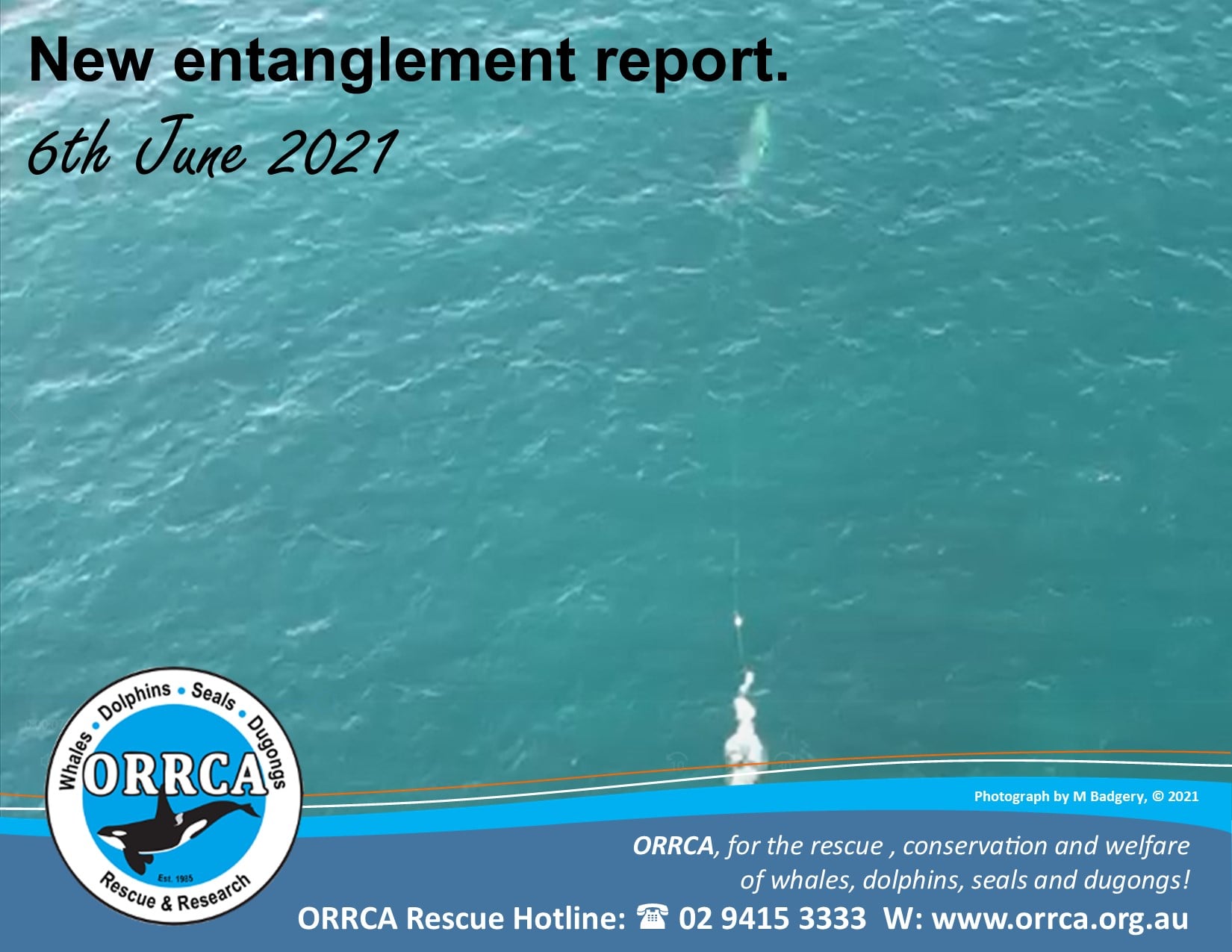
Update June 7 2021 (per ABC, 6.17 a.m.): Marine Rescue NSW said the whale became entangled yesterday and appeared distressed as it was swimming around in circles. Water Police managed to remove part of the netting before the whale — believed to be a humpback — swam off, heading north. Marine rescue service ORCCA spokesperson Jools Farrell said that based on the speed the whale was travelling it was most likely near Newcastle by now. ORCCA members will be out at first light onto headlands to try to spot it and inform Marine Rescue NSW's detangling team.
"They are the specialists in this field. It is a very dangerous job and it needs to be highly skilled people to deal with a situation like this. You have a humpback that has an entanglement on it. It is distressed," Ms Farrell said.
Please report all entangled marine mammals to the ORRCA Rescue Hotline on 02 9415 3333.
Although this work shows a now whole multiple agencies co-ordination and collaboration as one, from the observations by ORRCA members heading out to headlands to track the movements of these whales and report sightings to ORRCA's rescue hotline, the NPWS Marine Wildlife and Disentanglement Teams working behind the scenes coordinating logistics with crews along the coastline, the Marine Rescue crews who were quick to act and assisted as needed in putting out a security alerts and providing ongoing support, the various NPWS Teams on the northern NSW coast who were ready to act following the confirmed sightings, and the members of the Sea World rescue crew who bravely went out on dusk to attempt to rescue this young whale, these entanglements may be the first of several that occur tthroughou this whale migration season.
Marine debris of fishing gear such as line, ropes, hooks, buoys and other materials lost on or near land, or intentionally or unintentionally discarded at sea, is having a devastating impact on turtles, birds, penguins and whales. Every other day Australian Seabird Rescue Central Coast, who also come into our area to help marine wildlife, are rescuing birds, penguins and turtles injured by fishing lines or discarded hooks, some of which die from their wounds - all preventable.
In 2003, ‘injury and fatality to vertebrate marine life caused by ingestion of, or entanglement in, harmful marine debris’ was listed as a key threatening process under the Environmental Protection and Biodiversity Conservation Act 1999 (EPBC Act). A key threatening process is defined as that which ‘threatens or may threaten the survival, abundance or evolutionary development of a native species or ecological community’. Under the EPBC Act, the Australian government implemented the Threat Abatement Plan (TAP) which focuses on strategic approaches to reduce impacts and injuries to marine fauna and ecological communities.
Since then we've seen programs such as the GhostNets Australia, an alliance of Indigenous communities stretching along 3000kms of coastline in the Gulf of Carpentaria, which has, since 2004, prevented over 14,000 discarded or lost fishing nets from continuing their deadly journey around the ocean by removing them from this system. This coordinated group has rescued more than 400 marine turtles from a slow and painful death in doing so.
Ingested plastics is also killing marine life nationwide, with CSIRO research showing that on our shores and the waters adjacent to them has been put there by us.
As we go to press this Issue the keenest aspect of the sinking of the MV X-Press Pearl on June 2nd 2021 off the coast of Colombo, Sri Lanka, after burning for 12 days, is that this incident is spilling microplastics across the country’s pristine beaches and killing marine life.
The ship was carrying 25 tonnes of nitric acid, sodium hydroxide and other dangerous chemicals as well as 28 containers of plastic used to make plastic bags. It also had more than 300 tonnes of fuel in its tanks. Plastic resin pellet pollution from spilled cargo was washing up on Sri Lanka's beaches from May 27th. LDPE pellets have also been washed onto nearby land.
In recent years everywhere from Scotland to Thailand whales of all kinds have been dying from ingesting plastic bags, including a pregnant pygmy sperm whale washed onto a beach at Williamstown in Melbourne in 2018.
The same product is killing our own local turtles, seals, penguins and seabirds. Through residents being outspoken and active once major users of these have changed their practices. On Monday May 31st Woolworths announced it has removed approximately 9,000 tonnes of plastic packaging from circulation over the last four years* as it works towards transitioning its entire Own Brand range to recyclable, compostable or reusable packaging by 2023. The retailer has more plans to rid itself of the scourge of plastics by implementing a range of measures that reflect the views of the communities it is part of.
In fact every state, except New South Wales, has banned the use of lightweight plastic bags, disproving any of the incessant narrative of being a 'first' or 'smart' state of Australia. The lack of political wherewithal has been made up for by the residents.
This week Pittwater Online received an update from Avalon Boomerang Bags;
The Boxes of Bags are Back
In the year we’ll never forget the familiar boxes of reusable shopping bags were removed from the sidewalks of Avalon. But now they’re back ……………
While Boomerang Bags are not intended to replace people own enviro bags, rather to be available when an extra shopping bag is needed or for that impulse purchase.
The group aims to help stop the use of plastic bags & plastics pollution on the northern beaches. Way too much plastic ends up in our ocean so by using enviro bags you can save up to 600 plastic ones. Another bonus of the bag production, is the decrease in textile waste because most of the bags are made from donated fabrics destined for landfill.
One of the groups sewers Sue, said “because of restrictions our team of volunteers continued to make bags at home until Avalon Recreation Centre reopened and we could return to our weekly Tuesday workshops.” Another added “It’s a great group and there’s always plenty to do, it’s not all sewing and the conversations are great. Some people have never sewn before but making great progress although the overlockers continue to challenge some of us”.
Lots of hands helped with screen printing workshops recently to create the patches and pockets for the bags. The new logo says it all “SAY NO TO PLASTICS”.
Initially, the boxes can be found outside Dogue on Old Barrenjoey Rd, Chambers Cellars on the corner and at North Avalon Cellars on North Avalon Rd. Several other shops such as Le Pont Clareville, Avalon Organics and Avalon Wholefoods will have baskets of reusable bags, and the group is trying to encourage more shops to do this for when their customers need the extra bag. Boomerang Bags are happy to supply signage if your shop is interested in doing this.
Help your community by donating clean reusable bags (just pop them into a boxes or the baskets), or by donating fabrics or even by helping make the bags. All enquiries boomerangbagsavalon@hotmail.com.
The life in our oceans is also the focus of a current petition calling to reinstate the small area surrounding the southern internal headland of Palm Beach back to a Marine Park. The petition reads ''This area has had beautiful marine life with gropers taking residence. Sadly most have been taken. As a resident we are finding fish still alive caught up on hooks and line. Fish being cleaned next to the ocean pool with entrails and heads floating in the pool. ''
Margie Charlton shared in her 2020 profile an insight into one of these then resident gropers;
''When we come back from our swim we like to just float out to Jump Rock and back. While there we look for our friend ‘Big Blue’, this great big groper, who has his girlfriends hanging around him. Sometimes he’s in closer and we’ll swim over the top of him as he swims back out.''
The spearfishing of the gregarious blue groper is banned in NSW and has been since 1972. These friendly long-living fish made easy targets with the population declining so far and fast they are still listed as protected, along with the brown and red groper species.
This returns us to the Life in the Oceans, under the sea's surface, and along its shores.
MP for Warringah Zali Steggall, MP for Mackellar Jason Falinski, MP for Manly James Griffin, MP for Pittwater Rob Stokes, Living Ocean, along with Surfrider Northern Beaches branch and Save Our Coast, the Newcastle based group, in yet another along the coast all as one coordination, have been active in ensuring the opposition thousands of people from our area have to the PEP-11 is clearly heard at a Federal level.
As the community reaches 4 months of waiting to hear from Federal Minister for Resources, Water and Northern Australia, the Hon Keith Pitt, MP for the electorate of Hinkler, which includes the Great Sandy Marine Park, and a place where Mr. Pitt has served for a decade in the past as a surf lifesaver, the proponents are making announcements as though an extension for the February 12th expired licence is now a mere formality.
On Monday May 31st BPH Energy's (BPH) investee company stated it is looking to secure tenders for its contended PEP11 exploration prospect even though permit approvals remain undetermined.
Advent Energy's wholly owned subsidiary, Asset Energy, has issued a call for the provision of subsea wellhead equipment, materials and associated services for the Baleen drilling programme within the Offshore Sydney Basin, on May 31st 2021.
''This equipment provides the 'foundation' for the Baleen well and is the first stage of well construction. This is an important step in the preparation and planning for the Baleen-1 well ensures that Asset will be ready to commence drilling after relevant approvals have been received.
When the well has reached total depth and been fully evaluated, the well will be plugged and abandoned in line with pre-drill planning as an exploration well, and the well head and associated equipment well be removed from the seabed.'' the statement says
The company states the call represents an important step in planning for the Baleen-1 well and ensures that Asset will be ready to commence drilling after relevant approvals have been received.
The status of these approvals, which were initially filed for in February, remains somewhat ambiguous after NSW Deputy Premier and Minister for Regional Industry and Trade John Barilaro said, officially, the permit should be rejected. Prime Minister Scott Morrison has also publicly stated when asked if PEP-11 should proceed 'no'.
Since then the proponents narrative has aligned itself to the announced federal government agendas. On May 17th 2021 there was a statement reiterating the partners have previously confirmed all gas sourced from the permit will flow into Australia’s east coast market, and that ''The revised proposal to undertake deeper drilling at Baleen-1 is expected to evaluate the potential for carbon sequestration, also known as carbon capture and storage.''
In its last day of May statement, BPH assured the well would be plugged and abandoned with the wellhead and associated equipment set to be removed from the seabed once it had reached a total depth and been full evaluated.
While it was due to expire on Friday February 12th, the PEP-11 licence has now entered a rollover period and exploration can continue until a final decision is made, thus placing the Federal Minister for Resources, Water and Northern Australia in a position to aid and abet their and his government's agenda by simply remaining silent - unless he's holding out for a World Oceans Day 2021 big splash announcement.
Pittwater Online's February 2021 update on PEP-11 referred to an interview with the Minister of the 5th of that month. The final question was clearly geared to bring the point of wanting Life to remain in our home Ocean by referring to the Minister's own patch of protected sea.
When asked ''Would you be comfortable with an oil company applying for a license to drill off Hervey Bay then?'' Minister Pitt replied ''Clearly, there are restrictions as to where the exploration can occur. There is the protections in marine parks, for example.. ..''
Does there need to be a whole of coast and whole of application for our own 'marine park'?
Finally, the day after World Oceans Day, once the community has brushed the salt crusted crystals of ocean from its latest sail, surf, paddle, you can head into the Avalon Beach RSL where the Rotary Club of the Upper Northern Beaches will be holding its June 2021 meeting where Guest Speaker Sasha Grebe will provide an insightful presentation about converting plastic into energy. Meeting Time; 6.45 pm (Dinner Bistro from 5.30 optional) - State of Origin on the big screen afterwards.
And everyday - we'll continue picking up plastic and keeping an eye out for any distressed, attacked or injured sea wildlife.
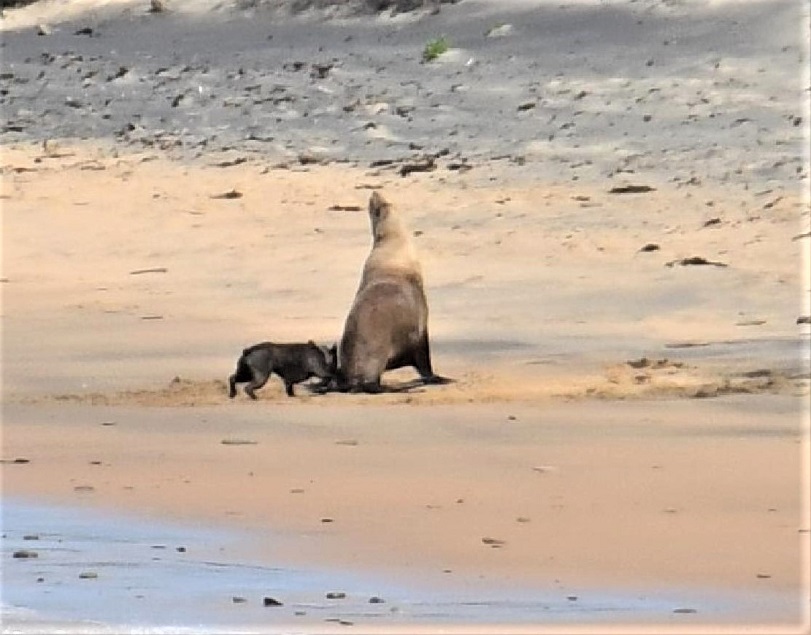
Off-leash dog in Long Reef Aquatic Reserve attacking a seal - 2020. Photo supplied.
A Few Extras: Our Local Wildlife Feels Too
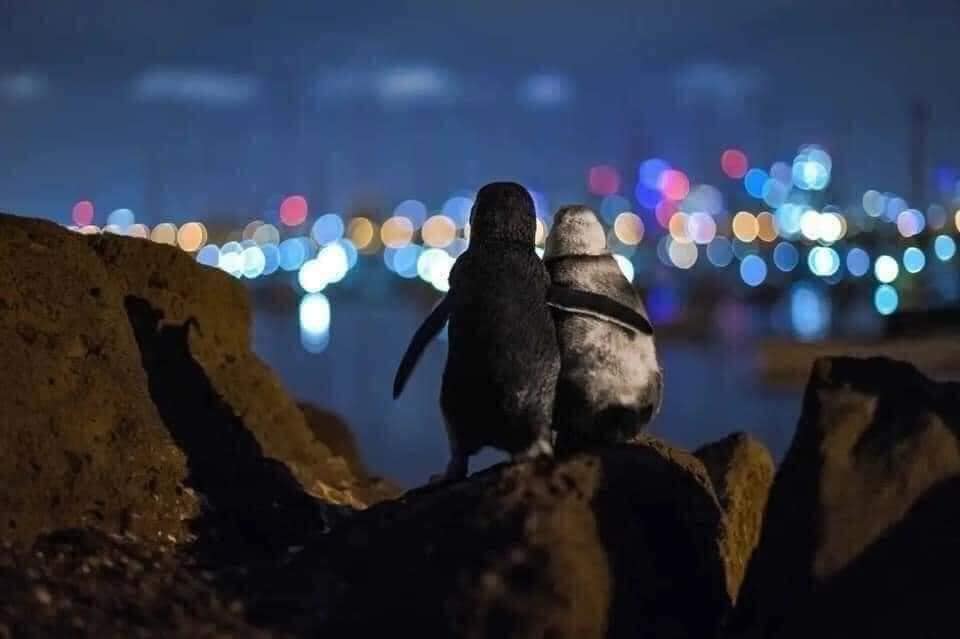
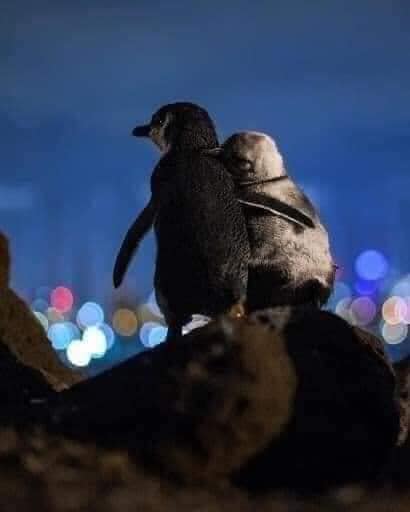
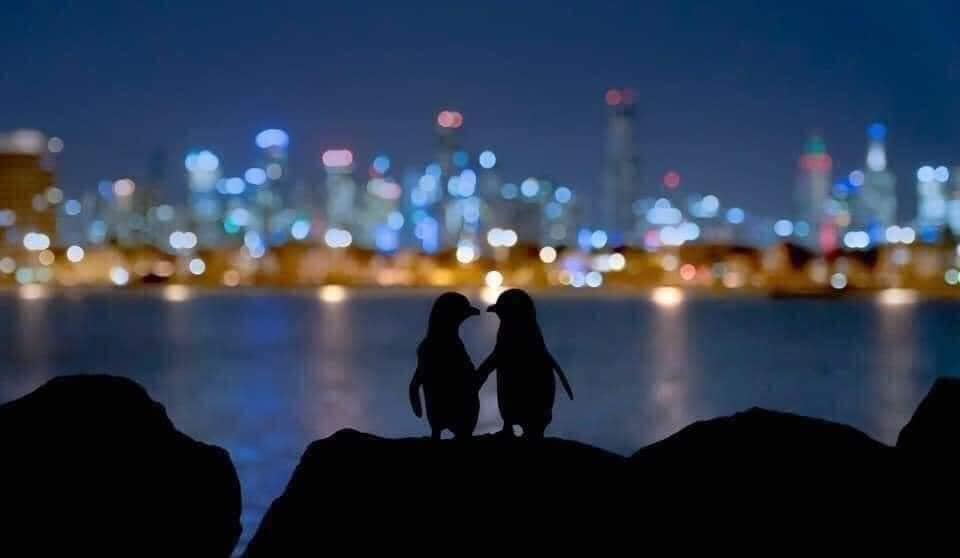
Ocean Photography Awards 2021
Our Own Local Fairy Penguins: World Oceans Day 2021 - June 8th
Here's some more insights to get you in the mood for celebrating where we live. This year the theme of World Oceans Day is The Ocean: Life and Livelihoods. Around 80% of Australians live on the coast, so our lives are intrinsically linked to the ocean – it provides us food, livelihood and a wonderful playground that brings joy and relaxation. We also share this place with many other animals - turtles, all kinds of shorebirds, seals, the whales you will see passing on their migration north at present and Fairy Penguins. Their lives and them getting to live in peace and safety are important too and we are now, between June and August, into their breeding season.
In June 2019 we brought you some news about a project to put fireproof burrows on Lion Island for the colony that lives there - these penguins are seen in the Pittwater estuary and right along the coastal beaches. They used to have nests and colonies on the beaches all along our coast as well - at Turimetta Beach, Narrabeen and Long Reef in particular.
Here's some at Narrabeen in 1955 - and reports of them at Long Reef as well:
When summer comes . . .
.jpg?timestamp=1619878281381)
HE MUST go down to the sea again, the lonely sea and the sky- but only for dinner. This hungry little chap couldn't wait for the rest of the flock that gathers for a nightly 3 a.m. party on the beach. Then they return to their nests to sleep all day.
.jpg?timestamp=1619878349216)
HOUSING TROUBLES begin, at Mrs. E. Whittaker warns off a mother bird for squatting with its young beside her shed. But (inset) the penguin family sits tight till ready to vacate.
PENGUINS at the bottom of their garden
Spring comes with a difference to the gardens of waterfront homes in Ocean Street, Narrabeen, north of Sydney. It brings flocks of fairy penguins-the smallest of the breed-sauntering in from the sea to take up residence for their nesting season. As daytime guests they're welcome, but at nightfall they head down to the sea for food-making noises that keen everyone else awake, too. They stay for a few months.
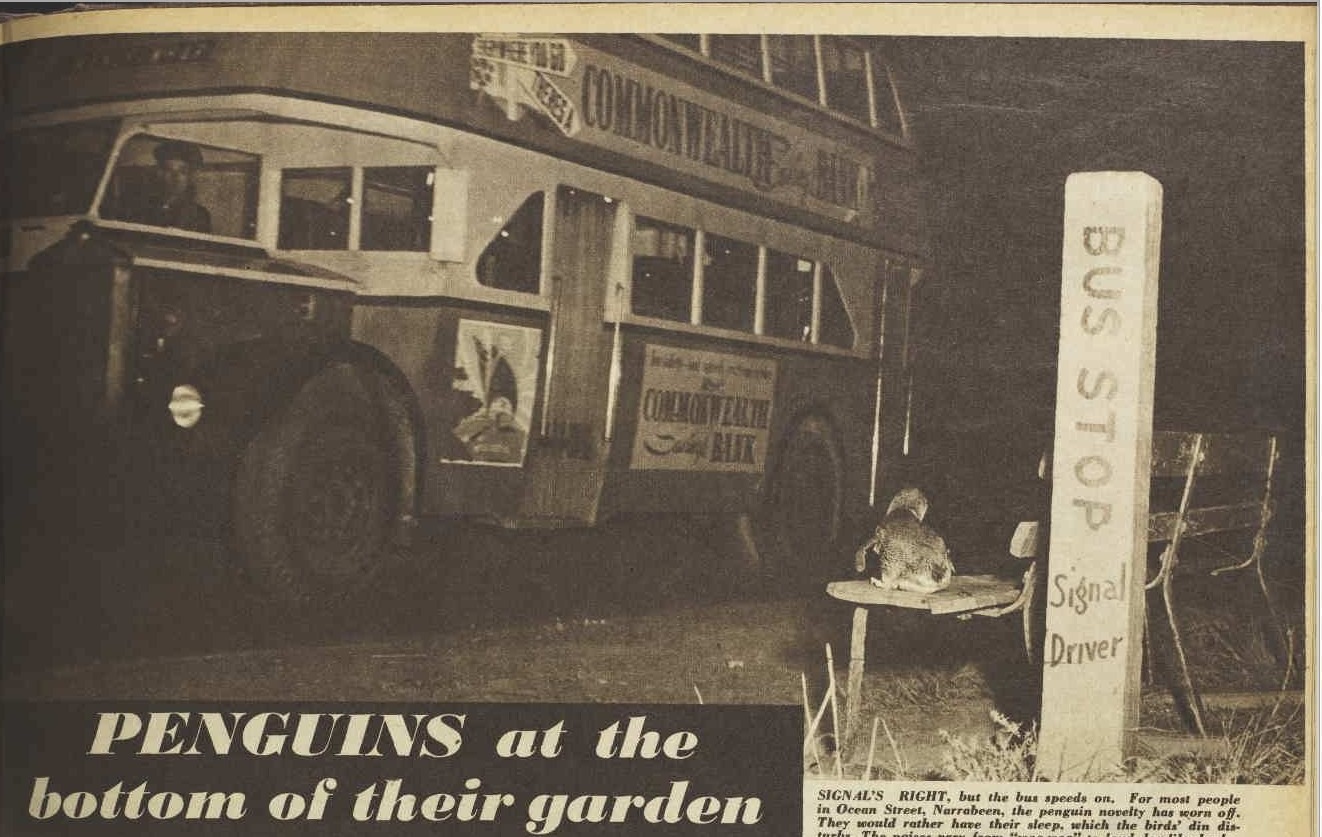
HUNTING for invaders under the house, this family is helped by neighbors. Householders have M tried fencing and boarding around their houses, but still the penguins come to nest each year.
SIGNAL'S RIGHT, but the bus speeds on. For most people in Ocean Street, Narrabeen, the penguin novelty has worn off. They would rather have their sleep, which the birds' din disturbs. The noises vary from "woo-woo" to loud dog-like barks.
.jpg?timestamp=1619878478650)
THE MAN who came to dinner takes it for granted he's welcome as Mr. W. Gillanty greets him. Residents, particularly light sleepers, now have to resign themselves to a trying time while the penguins, which are protected, are in charge.
PENGUINS at the bottom of their garden (1956, December 12). The Australian Women's Weekly (1933 - 1982), p. 23. Retrieved from http://nla.gov.au/nla.news-article41852332
Marine Parade North Avalon resident and ornithologist Neville Cayley is mentioned in this one:
Two Little Penguins
AS Mr. Neville Cayley mentions in the 'Mail' that there is very little known regarding the length of time these penguins care for their young before turning them out, I thought the following account would be of especial interest to readers of 'Outdoor Australia.'
At a crowded Museum lecture Mr. Kinghorn told us this unusual incident. One morning towards the end of August, 1921, the peace and serenity of some dwellers at Collaroy Beach were disturbed by extraordinary noises and weird cries at the back door. When the astonished owner of the house opened the door in rushed two little penguins, which with loud voices announced their intentions of staying. Then they danced about and waved their little wings in a most ingratiating way. After a short time these noisy visitors were shown the door, and they disappeared for a while. But, having chosen their home, Mr. and Mrs. Penguin returned later, and as they could not get inside the house they went underneath as far as they could get, and there made their nest of seaweed. The noise every night was almost unbearable; they would scream and cackle, and later, after about six weeks their songs of joy were terrific, for two youngsters were hatched.
About four months after their arrival the penguin family suddenly departed. Where they wintered is their own secret: but late in the following August a terrible cackling outside advised these householders that they were back. When the door was opened Mr. and Mrs. Penguin marched triumphantly in, followed by two grown chicks, which were inquisitive and rather shy. Then followed extravagant dances of greeting and vociferous songs of 'Here we are again,' etc., in which the young ones also joined.
They could not be quietened, and the neighbours hastened across to see if someone had gone mad. The owners of the house put the whole family down on the beach and drove them away. It was then that the parents sent off the chicks to fend for themselves, and they themselves returned later and went under the house to their old nest. The celebrations were so overpowering that the householders took down some boards next day, got the noisy pair out, and drove them at night by car to Palm Beach, about twelve miles distant, and there left them. But next morning saw them back.
They were taken a second time, but returned, and were allowed lo stay; but a home was made for them in the far corner of the garden. The house side was netted off and a hole cut in the fence to allow them free access to the beach. They made a nest of seaweed, and later two eggs were laid. The birds look it in turn to sit on them, and there was always much shouting and scolding when one returned from the sea at night.
After about six weeks two sooty-brown chicks appeared, and the noise that night and the next few days while the celebrations lasted was tremendous. The parents took it in turn to fish and swim during the day that followed, but at night they often went out together to find a suitable supper, and about 9 p.m. would return, arguing together as they came up the beach. The following summer my father saw a young penguin land on the rocks at Coogee. I think it quite likely that it was one of the young ones turned out at Collaroy. It was evidently not very used to fending for itself, for a patch of feathers was torn from its shoulder, possibly through not being an adept at landing.
At the time of the lecture these queer visitors were still in residence at Collaroy, and what became of them I do not know. It is likely enough that the nesting-place on North Head mentioned by Mr. Cayley is occupied by these little penguins or their descendants. Outdoor Australia (1925, March 18).Sydney Mail (NSW : 1912 - 1938), , p. 10. Retrieved from http://nla.gov.au/nla.news-article159721727
It is recorded that two Fairy penguins for a number of years made seasonal visitations to Collaroy, near Sydney, and often laid their eggs under the floor of one of the houses there. — F.J.B. Quaint and Beautiful Sea Birds (1934, October 31). Sydney Mail (NSW : 1912 - 1938), , p. 56. Retrieved from http://nla.gov.au/nla.news-article166107257
The Lion Island colony was officially first protected 65 years ago - although they had been protected decades prior to then:
PROTECTION OF PENGUINS.
Mr. Oakes (Chief Secretary), who is in charge of the Act relating to wild life, desires it to be generally known that all species of penguins are absolutely protected by law, and that anyone interfering with the birds is liable to a penalty. Apart from this he says citizens are requested to refrain from molesting this interesting bird, or driving it back to the sea, as, naturally, no water fowl liked getting wet when half-feathered.
Mr. Oakes remarked yesterday that fairy penguins, which were frequently seen off the coast, came ashore at this period of the year for moulting purposes for about three weeks. During that time they had not been observed to feed or enter the water. Many persons had offered specimens of the birds as exhibits to the Taronga Zoological Gardens, while others had made inquiries how to keep them alive in captivity. As this species of penguin only lived on live fish they could not be kept alive away from the sea. PROTECTION OF PENGUINS. (1923, December 18). The Sydney Morning Herald (NSW : 1842 - 1954), p. 8. Retrieved from http://nla.gov.au/nla.news-article16127509
PENGUINS ON COAST ARE PROTECTED
A penguin caught to-day near Palm Beach v/as refused' by Zoo authorities. The birds are common along the coast at present, are protected by law, and do not live in captivity.
The secretary of the Zoo (Mr. H. B. Brown) said today that the public had been warned against molesting the birds. PENGUINS ON COAST ARE PROTECTED (1936, December 30). The Sun (Sydney, NSW : 1910 - 1954), p. 12 (COUNTRY EDITION). Retrieved from http://nla.gov.au/nla.news-article230907746
Surfers and people on boats report seeing them on an almost daily basis in our area. There is also a Fairy Penguin Colony at Manly.
The ladies from the Fix It Sisters community group have extended their project beyond Lion Island to the South Coast of NSW. In March 2021 they reported that:
Success at Snapper Island!
(This is part of the Eurobodalla Shire Council - which is on the South Coast of NSW)
Update on our Penguin Burrow project. Since installation of the first burrows at Snapper Island (Batemans Bay), some of the penguins have taken up residence and in 2020, gave birth to chicks. Exciting development for our burrow project.
In the meantime, FiS has been working hard in partnership with Pink Cactus on improving the design of the original burrows.
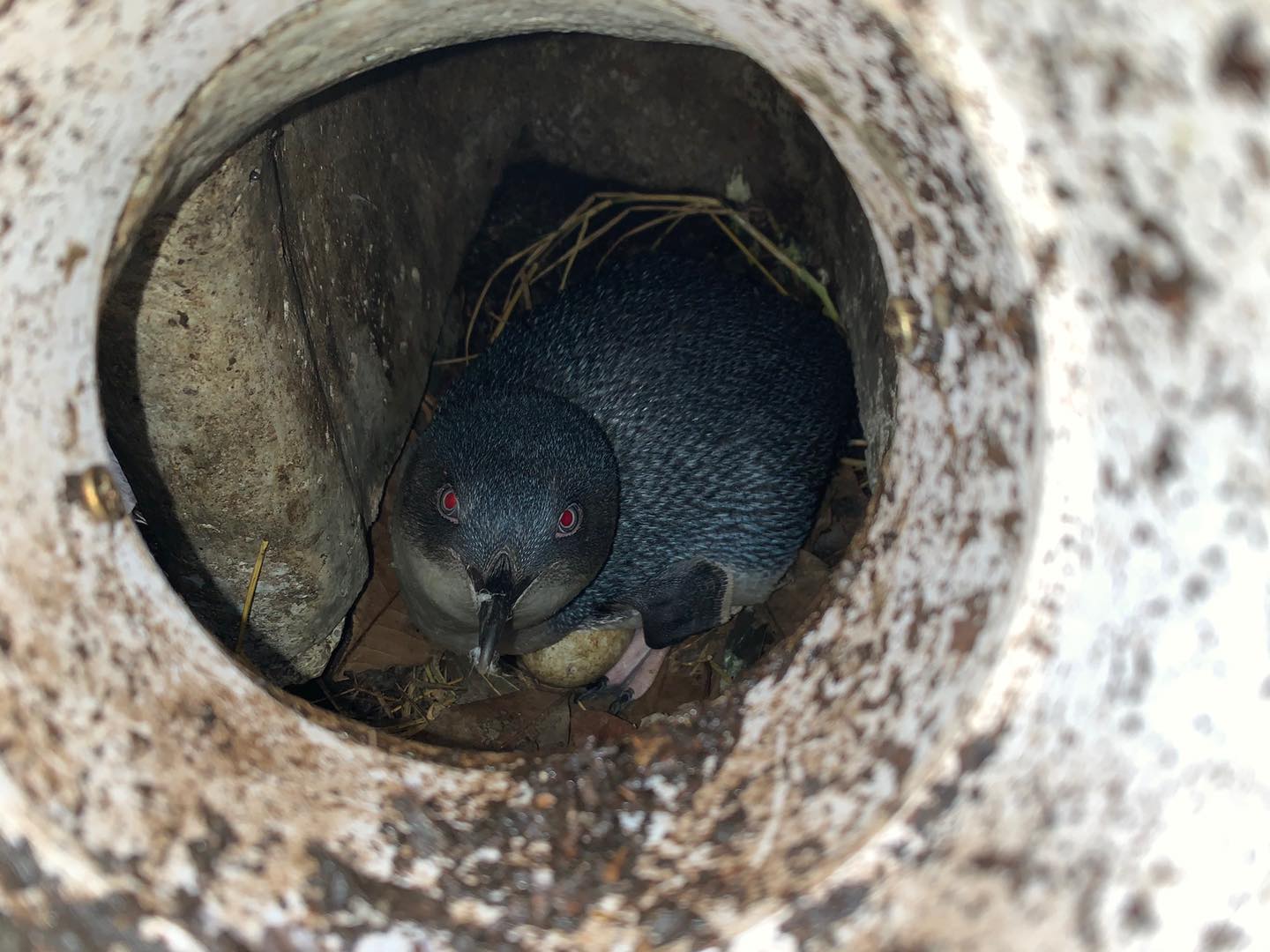
Fix It Sisters photo, March 16, 2021
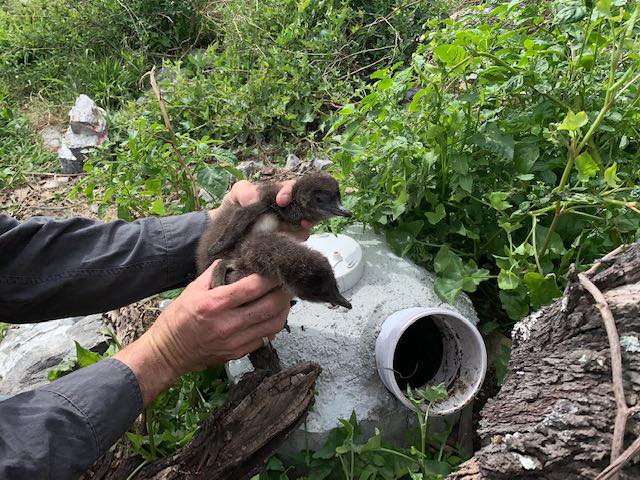
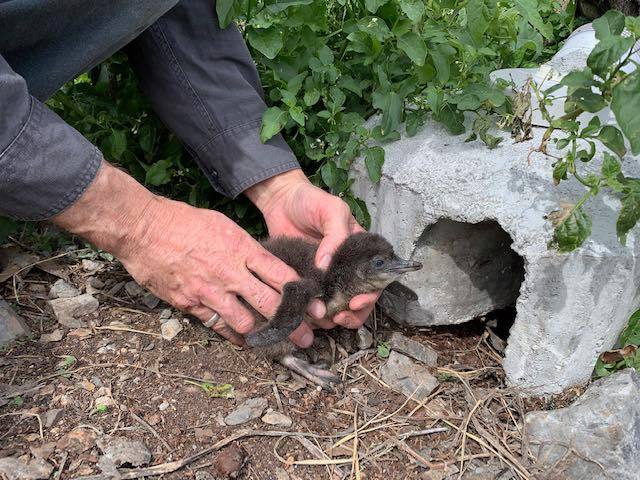
Fix It Sisters photos, March 16, 2021
In 2019 the Eurobodalla Shire Council said:
The Snapper and the Tollgate Islands add scenic beauty to the idyllic seascape of Batemans Bay. Aside from their aesthetic value they hold another surprise which even locals are often unaware – breeding colonies of little penguins.
Eurobodalla Council’s invasive species supervisor Paul Martin said little penguins were the world’s smallest, up to 30cm tall, with an iridescent blue back, snow-white belly, and pink legs and feet.
Paul said the birds could spend days or even weeks at sea before returning to recover and enjoy island time between fishing trips.
“The penguins scrape out their love pads among the low-lying vegetation in early September. Mating, laying eggs, hatching chicks and teaching young penguins the way of the ocean takes until the end of summer,” Paul said.
“Because the eggs and chicks, hidden in vegetation, are so vulnerable to being stepped on, there is a no landing policy on these islands.”
Paul said the penguins local to Batemans Bay were found only on islands, where there were no cats, foxes, dogs or humans.
“About 15 percent of the this population live on Snapper Island, just a stone throw away from the Batemans Bay CBD, so we’re putting a lot of our efforts there,” he said.
“It’s not only the penguins at risk from visiting humans. Sooty oystercatchers – with their black plumage and bright orange bills – also nest on Snapper Island.
Paul said the ‘sooties’ were a threatened species that typically lay two eggs on a flat area just above the high water mark.
“The eggs look exactly like surrounding rocks and are easily stepped on when people walk the tideline around the island,” Paul said.
“The other big risk to both penguins and other shorebirds is entrapment; by plastic pollution like fishing line and drinking bottles or by weeds like kikuyu and turkey rhubarb. These vine-like weeds form loops and birds get entangled and eventually starve to death. That’s not a good way to go in anyone’s book.”
Paul said Council’s sustainability team and Landcare volunteers had commenced work on Snapper Island, clearing environmental weeds and plastic pollution and providing additional nesting opportunities for the little penguins.
“During the summer months, there is nothing better than a kayak paddle around Snapper Island,” Paul said. “However, to ensure our penguins and oystercatchers continue to breed here, Snapper Island is definitely a look but don’t land affair – take your binoculars for a closer view.”
Below runs a video this Council has put together on their Fairy Penguins. Just one of the birds we share our home with!
